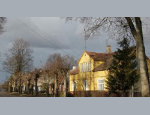Visualizing Outdoor Sign Types for Planning Commissioners
Several of our readers are having trouble figuring out some of the terminology used for outdoor sign types in zoning ordinances, conditional use permit applications, and other development review regulations or documents. This page illustrates the typical meanings of each of many types of signs.
If you are a planning commission member struggling with how to categorize outdoor signage for purposes of revising your zoning ordinance or its regulations, this page will help you identify the different situations you are likely to encounter. Although it may seem that these definitions would be both universally accepted and comprehensive, that is probably not the case, as we will see.
Of course, this is also helpful information for a city council or other governing body of a city or county. Some HOA board members or association members also may find it helpful to have some common terminology.
At the outset, I need to point out that signs may exhibit characteristics of more than one type, or the sign type may be ambiguous. However, I am not sparing you the brain stress, because your ordinances or HOA bylaws need to be prepared for these borderline situations. You may encounter several complications when a sign falls into more than one category. There is no universal advice for this situation, but cover as many possibilities as you can think of in your ordinance, thus preventing your building officials from having to make up rules as they go along.
The Major Outdoor Sign Types
Wall Signs
This category is extremely common, probably the most common permanent sign in commercial areas. They may be painted on, or applied with or without a backing. If the wall itself shows throw gaps in the letters, that would be considered without backing, but if the entire sign if on a rectangle or other shape that is then mounted to the wall, that would be what is meant by “with backing.” Some ordinances describe a maximum distance from the face of the building that a wall sign can protrude in whole or in part, but many make no such distinction.
Below is a photo allowing us to consider several signage definitions. Notice that the blue "St. Louis" part of the sign definitely has a backing. Arguably though, the word "GYROS" has no backing, although it appears to be mounted on a bracket. You don't need to worry about this much though because most ordinances do not distinguish between signs with and without backing; it's just terminology that sign contractors may throw out during debate.
Later in this article, we will be describing window signs, such as the writing on the door; the neon "Open" sign as an example of a lighted sign; and the little A-frame shape out by the curb, called a sidewalk sign or a sandwich board.
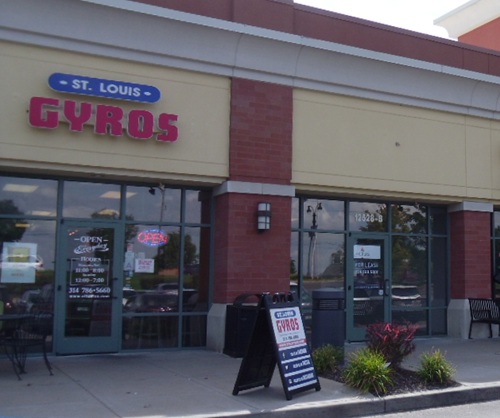
Below is another helpful example. The most striking part of this image from Madrid may be the painted-on wording and decoration at the top of the building; this also is a wall sign. Notice that in the brown band below the colorful area is another type of wall sign, this one being an unbacked sign with the letters "COLLIGA" and also a logo; logos are another part of wall signage that you have to decide how and whether to regulate.
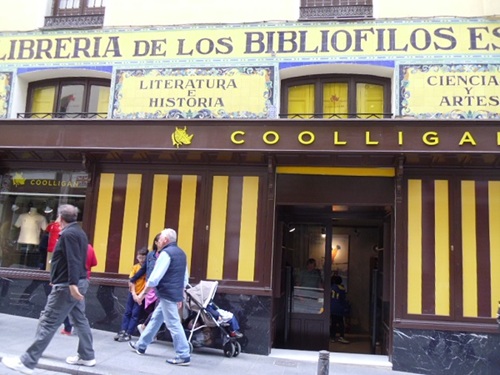
Lastly, I will throw in an image of a very large sign, although one appropriately sized for its purpose, location, and size of the building it describes. This illustrates the fact that shape, size, colors, and other characteristics do not alter whether something should be described as a wall sign or not. By the way, if you are looking for advice on regulating these characteristics, this page does not give it. See some overall perspectives on our general page about sign regulation.

Ground Signs
If the sign is supported on uprights or braces that are set in the ground--or on the pavers, sidewalk, etc. that lie directly on the ground--this is a ground sign. Note that they may be supported on one or more than one side of the sign, but if their support is in the ground, typically such a sign is governed under the ground sign paragraph. These also may be described as a pole or post sign in your ordinance. Our first example below shows that the size or shape of the sign has no bearing on whether it should be called a ground sign.
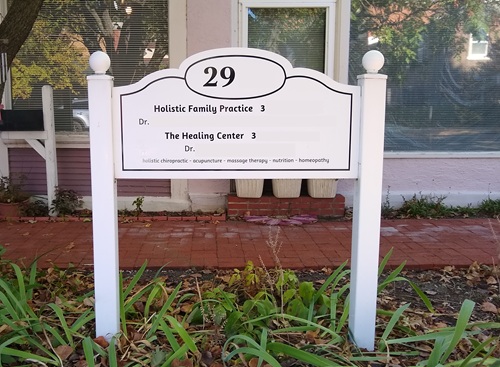
The "ground" may be slightly elevated without changing the definition, as in the example below where a historical marker has been set into a short landscape bed.
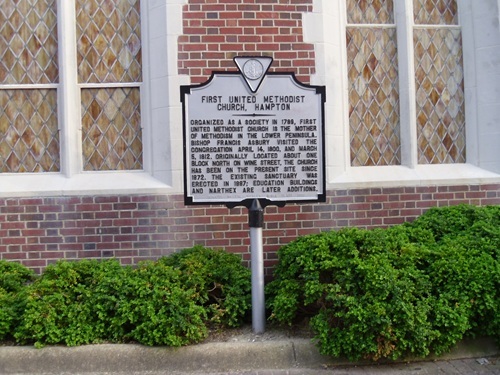
Lastly, as your city staff members wrestle with whatever sign ordinance you ultimately decide to adopt, they will find some ambiguous situations. We're calling the sign below a ground sign because it appears to rest on the sidewalk, even though it also may be supported by being attached to the roof of the first story.
By the way, this sign is interesting also because its lettering defies most of the usual definitions I've seen in ordinances. The words are supported on poles on each side of them. In my book, this is still a ground sign, and I would judge its permissible size, coloring, lighting, shape, and more on the basis of your ground sign regulations. But by studying this, you will notice what I mean by ambiguity.
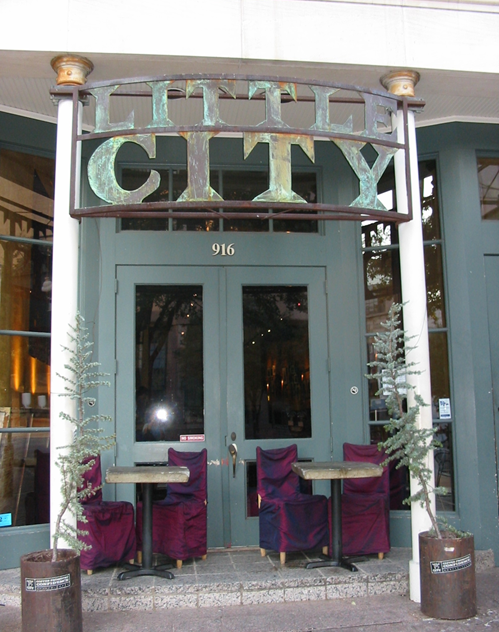
Projecting Signs
These signs are mounted on a building but protrude from it, typically at a 90 degree angle from the facade. These are extremely common in many business districts. The distance above the sidewalk or other pathway needs to be well regulated; you don't want someone to hit their head or an unwieldy item they are carrying on the sign. Stores also need to be able to move packages in and out, and infrastructure and lighting maintenance also needs to be taken into account.
It seems more common now that projecting signs also are hung from a bar for additional support, but below are two pure projecting signs. In the second photo, you may be able to see an additional specimen of this category beyond the Taco Bell sign.
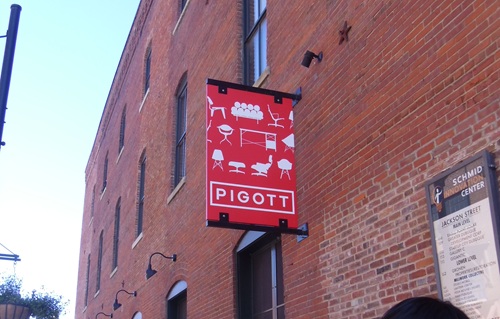
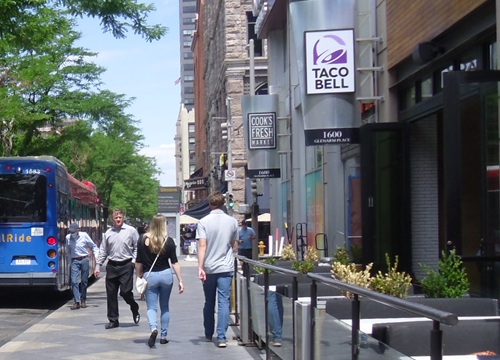
Monument Signs
The monument sign rests entirely on the ground and may be supported by various rods extending into the ground, or it may be mounted in concrete or pavement. This sign is commonly used only by larger businesses and organizations, and major entrances such as those leading to subdivisions or cultural institutions. Below are two examples. The Rockefeller Center sign is included to show that the content of the sign could be changeable; what matters for the characterization of the sign is how it is mounted and supported.
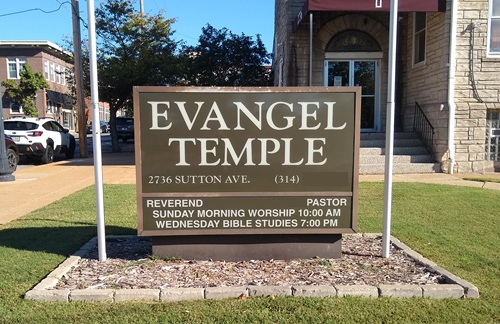
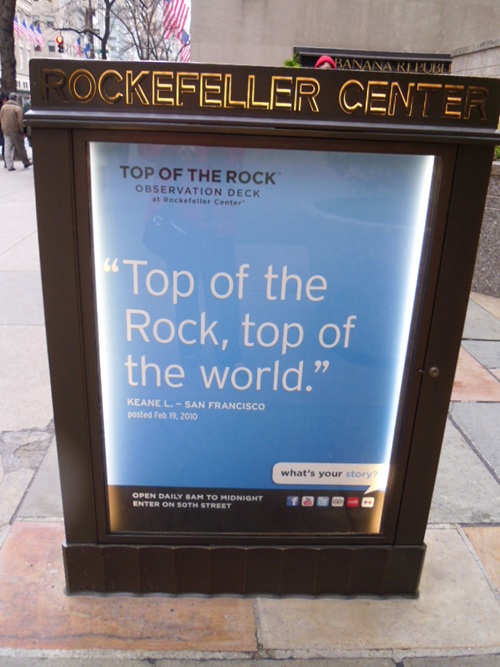
Hanging Signs
The hanging sign is suspended from some other feature, such as a post protruding out from the building that is designed for that specific purpose, or it may be suspended from a marquee or overhang of some sort. By definition, the support structure does not include a post or pole that is mounted in the ground. This sign sometimes is characterized by another descriptor also; for instance, it may be both hanging and projecting like the sign just below. My opinion is that the length of the chain does not matter much, in terms of your regulation, since one of your goals should be stability and safe passage for pedestrians.
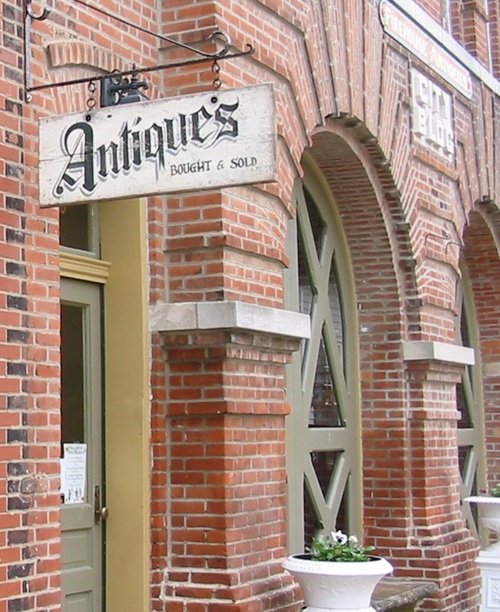
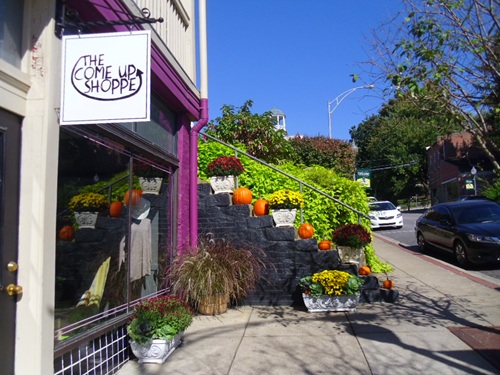

Window Signs
A window sign is painted or stenciled on either side of a window. It may also be a decal. Note that sometimes zoning or sign ordinances classify a sign that is internal to the business as a window sign if it is situated, for example, less than three feet from the window. This defeats the temptation to put a very large sign of some sort inside the business and thus circumvent limitations on the size of outdoor signage.

Awning Signs
In these instances, the business identification is included right on the awning. If you fail to treat these as a separate category, in a few weeks you will be dealing with an irate business owner who has been told that the commercial district encourages awnings of a particular color or style and who assumes that awnings contain an identification of the business. Every business deserves the opportunity for some identification. An awning sign rule also can be written such that it covers what might be called a canopy in common language rather than an awning.
The first illustration below shows the lettering on a common placement on a flat side of the awning perpendicular to the sidewalk. The second one below illustrates that the placement of the lettering on the awning does not matter in terms of the classification of the sign.
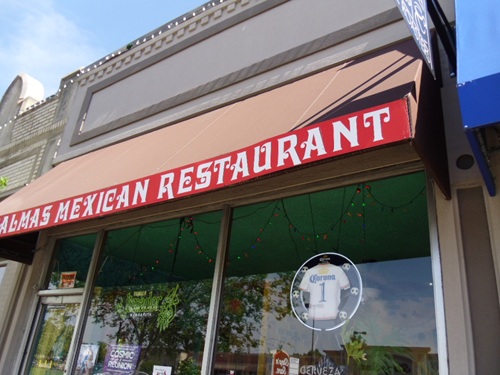
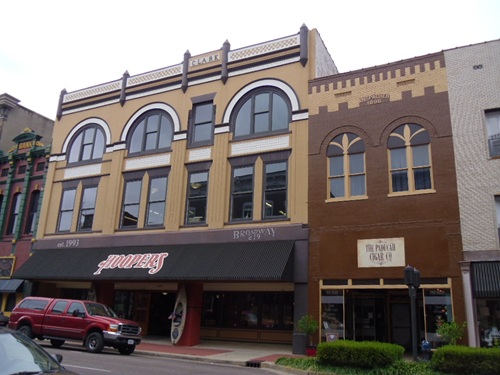
The Sidewalk Sign, Sometimes Called a Sandwich Board
These signs consist of an A-frame shape placed on a sidewalk or maybe on pavement or even on the ground. Usually these are easily moveable and may be regarded as temporary, with some being set out at the opening of business and removed at the close. If not regulated, these tend to spring up everywhere. That might be highly desirable if your sidewalks are wide and you are trying to cultivate and support small businesses, but if your sidewalk is narrow and crowded, or if your municipality especially craves a clean, uncluttered look, you may want to prohibit or severely restrict them or even require them to be picked up at the close of business.
Often these signs are somewhat temporary and often are written in chalk or painted rather than serving as a means of support for something that is printed. The second one below shows that the sidewalk sign can be printed too.

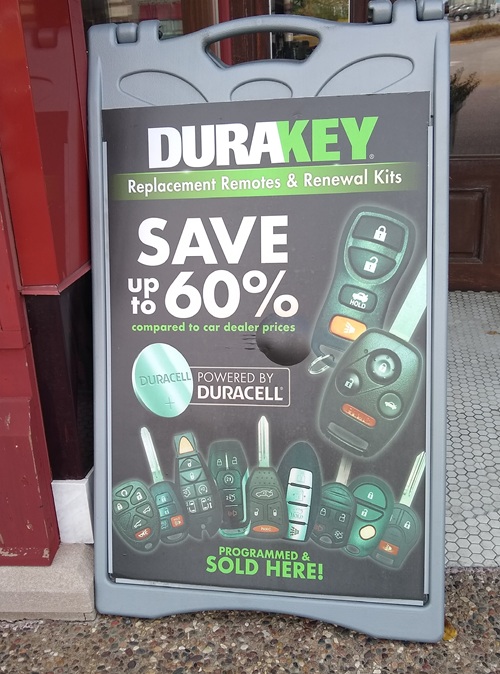
Billboards
We all know what they are. For our purposes here, a single billboard is usually a ground (or you may call it pole) sign. A possible variation occurs when these are not mounted on free-standing poles, where they may be stacked two or three high on highways especially, but also on arterial streets as the example below shows. In this case, I advocate taking this possibility into consideration when writing your ground sign regulations or specific billboard rules. Another complexity occurs if they are mounted on a rooftop, where they also fall under the definition of roof signs.
When writing billboard regulations, don't be too cute. If you don't want to allow the sizes, shapes, lighting, and colors that are common in your area, be prepared for intense howling on the part of the billboard industry, which is well organized and concentrated in a few firms in the U.S. If you intend to prohibit billboards in certain zoning districts, just do it; don't rely on arcane regulations to do it for you.
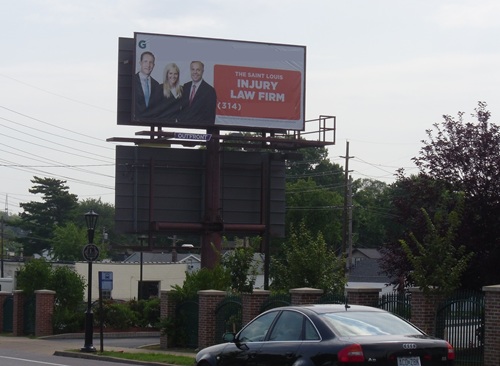
Roof Signs
Although not as common as they once were, presumably because they could represent a wind hazard, we still see signs mounted on a roof. Often this sign rests on what is clearly the roof of the whole building, but check out this admittedly attractive example of signage letters mounted on a metal overhang or awning; I would regulate this also as a roof sign. You might think differently, but hey, it isn't a wall sign or a ground sign, is it?
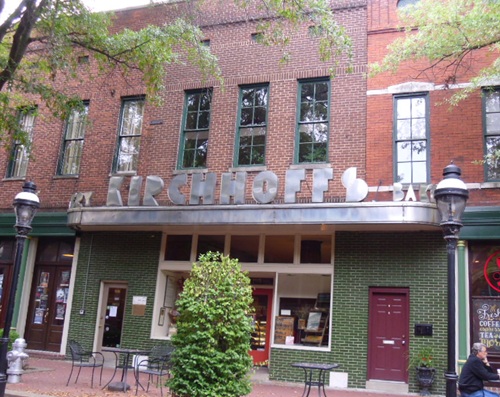
The Yard Sign
Yard signs are considered those that are mounted temporarily in the ground in either a residential or commercial yard. Common examples are real estate signs, signs supporting political candidates, and many more. Few municipalities prohibit real estate sale or lease signs, and many allow contractors working on a property to install a temporary sign; some HOA rules will not allow either.
By the way, if a sign is permanently installed, I don’t want to see that called a yard sign for regulatory purposes; that should be considered a ground sign and thus prohibited where ground signs are not allowed.
Signs below are pretty commonly allowed.
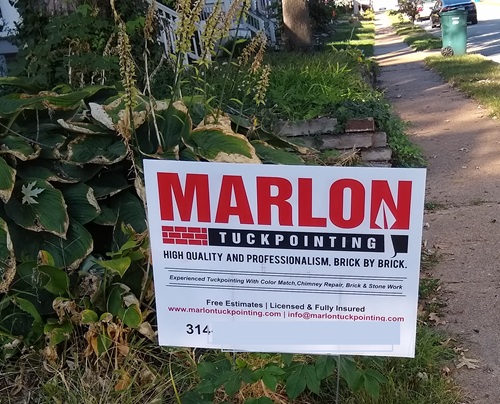
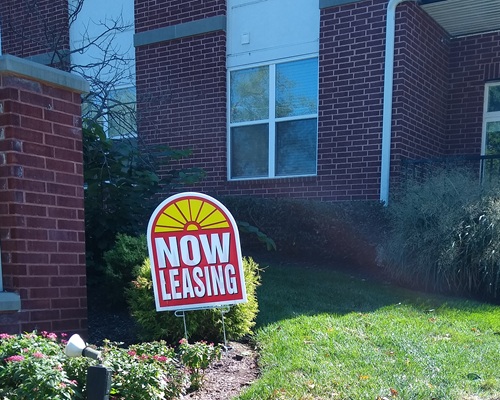
In my opinion, the sign below is another case entirely, but it will be your choice as to whether you regulate them differently. This one is akin to support for a political candidate in my book, but you have to decide if any self-expression, political or not, will be allowed.
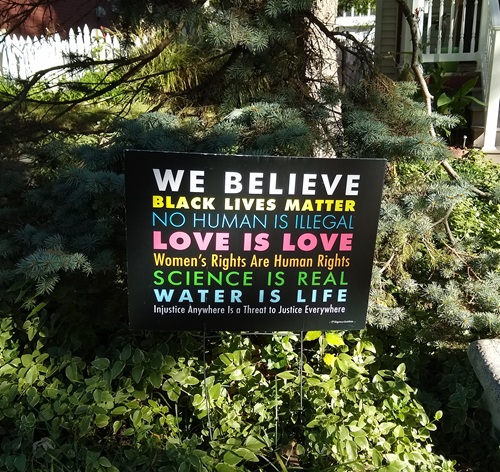
Temporary or Portable Signs
This leads to our one final major category before we get into special cases. The portable sign may address almost any subject matter, and indeed the sidewalk sign is an example of a portable sign. Yard signs also should be temporary signs. In short, if it can be moved, it is portable.
Yet there are a few types of temporary and portable signs we have not yet illustrated. Some (usually ugly ones) are mounted on a wheeled cart, but many are designed to be moved simply by human effort. Spell out whether these can be more or less permanent, where they can be placed, how safety will be addressed, and of course the zoning districts where they may be permitted. Explain what permits, if any, are needed.
Discuss with your city officials how the one below would be handled in your jurisdiction. Does it look stable to you? Even more basically, does a sign such as this require a permit from the city?
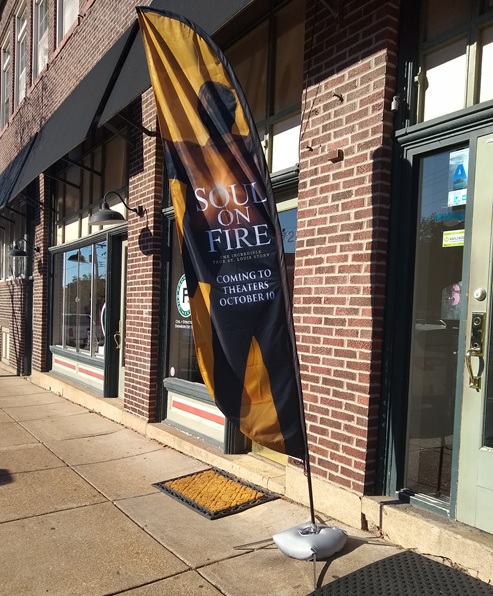
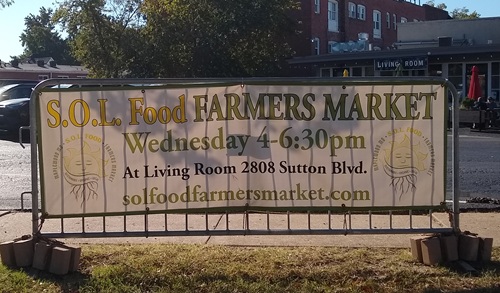
In contrast, the banner for a construction site below is clearly intended to stay up there for a while. The question for city officials is whether the life span of such signs should be regulated.
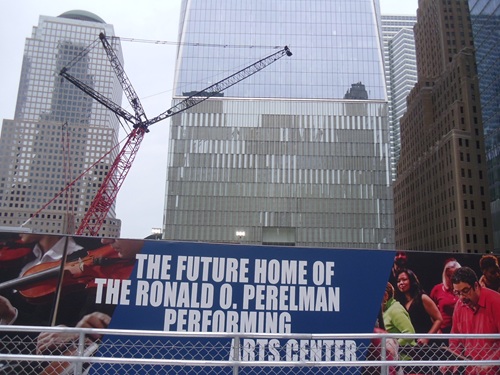
Joint Identification Signs
When several business names and/or logos are displayed on the same sign, that is called a joint identification sign and is commonly used for shopping centers, strip centers, and office buildings. The reason to define these separately is that most often you will want to allow a larger total area for them than you would permit for a single business.
However, of course strictly speaking, these are very often monument signs, or at the very least, ground signs. Here is what we mean by this sign type.
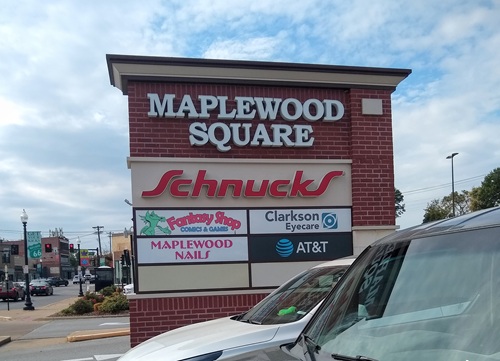
Be aware that your ordinance needs to allow for less flashy joint identification signs as well, the type frequently used when small businesses or professional offices are located in the same building or in close proximity.

Special Sign Types
This section focuses on less general outdoor sign types. Many of these are regulated in a typical standalone sign ordinance or the zoning ordinance. If you choose not to cover each of these in a separate paragraph and set of regulations, at least specify how the administering official is to handle them under the major categories above. It is worth noting that almost all of these are at least one of the above types, depending on how they are supported.
Animated or Flashing Sign
In these signs, the display will be intermittent, and often lighted. Electronic message boards fall into this general category as well, as typically they scroll information. Many cities choose not to create separate regulations for signs where the wording or figures move and to concentrate on how the signs are mounted, but those in charge of traffic safety may hate this type more than the others because our eye typically is distracted when we see something moving. If that something is not traffic related, it can potentially be a hazard to drivers.
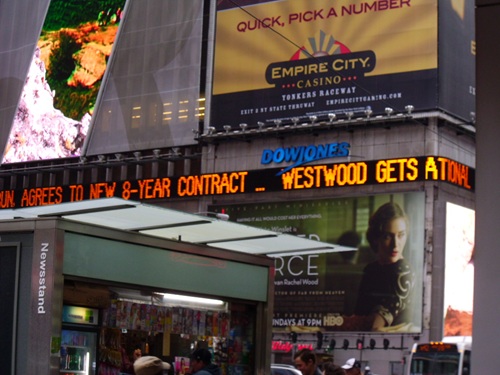
Lighted Sign (Sometimes Called Illuminated Instead)
This leads us to talk about lighted signs in general. Again, they are one of the types in the first section, but the lighting itself typically is further regulated, especially if there are residents nearby. Regulations may describe what type and brightness of lighting is permitted and hours during which may be illuminated. I may even describe special categories such as neon signs. A city may have reasons to treat neon signs more permissively or more strictly than other types of lighted signs. Be sure to think about both signs that are lit internally and signs where independent light fixtures hang over the sign, such as those seen in the second photo below.
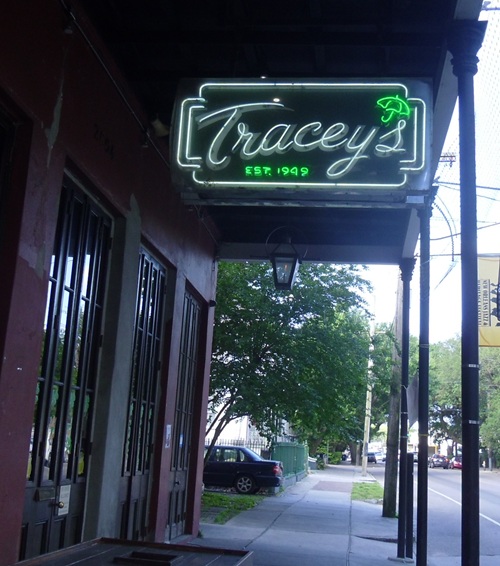
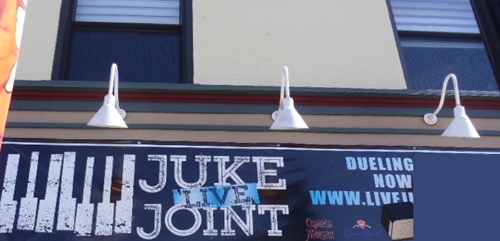
Directional Signs
Directional signs are often erected by a governmental unit, but at other times, businesses, schools, nonprofits, cultural institutions, or tourist attractions are allowed to erect directional signs. Again, they may be ground signs, wall signs, or other sign types. If any entity other than a government is allowed to post directional signs, including parking signs, you need to spell out conditions for them. If you don’t, you will have all shapes, sizes, and purposes of such signs in no time flat.
I also include small signs pointing out a driveway or other exit and entry points within the broad category of directional signs. Occasionally I see an ordinance where these are addressed specifically.
Below are three common types of directional signs found on private property, but at the edge of the public property. In most places these are allowed liberally, but consider briefly how you feel about it if each of the examples below includes a recognizable logo.
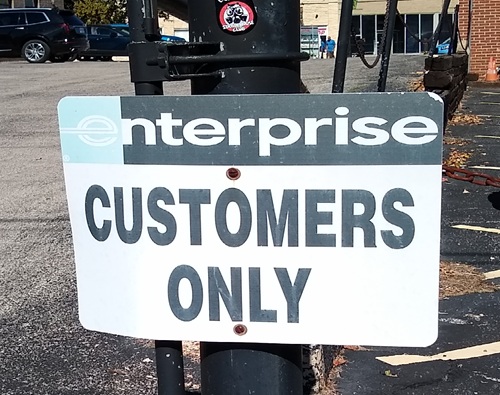
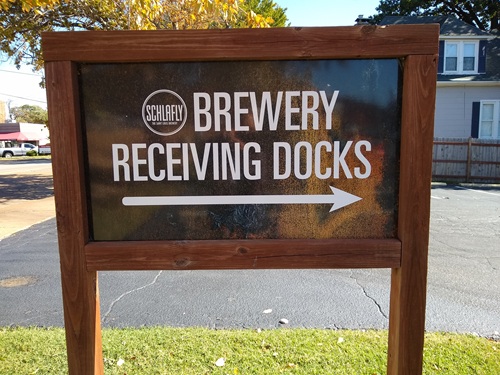
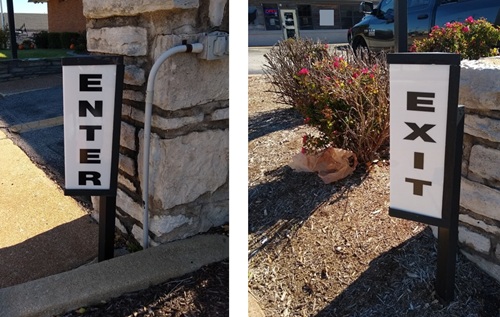
At times you also may face a cultural institution, university, or other important community organization that wants to post a substantial or artistic directional sign, such as the one below. Make sure your ordinance allows for such situations.
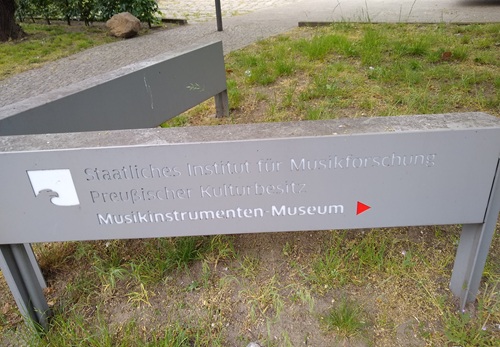
Reader Boards
A common example is the typical church sign that is changeable by manipulating removable lettering. These also might be called a changeable copy sign. They may be one-sided, or both sides may contain the same or different messages. Other people call the signs on wheels that have changeable letters a reader board, or even large signs like those found on a movie theater marquee.
In light of the Supreme Court decision requiring that sign regulations be content-neutral, you should think carefully about whether there is any utility at all in regulating reader boards separately from a designation that describes their method of mounting, namely ground signs, wall signs, window signs, and so forth. Is it really a governmental matter that the content of the sign may change from time to time?
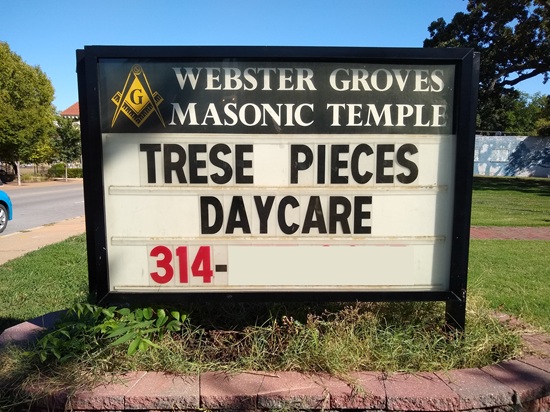
Wind-Driven Signs (Balloon or Wind-Activated)
These are another one that makes the traffic safety people a little nuts. Some are whirligigs, some are sail signs (shaped like a sail and mounted into a weight), and then there are the colored triangles designed to flap in the breeze from a line strung across a space, as is common with used car lots. Some that are not designed to be permanent actually are sophisticated balloons.
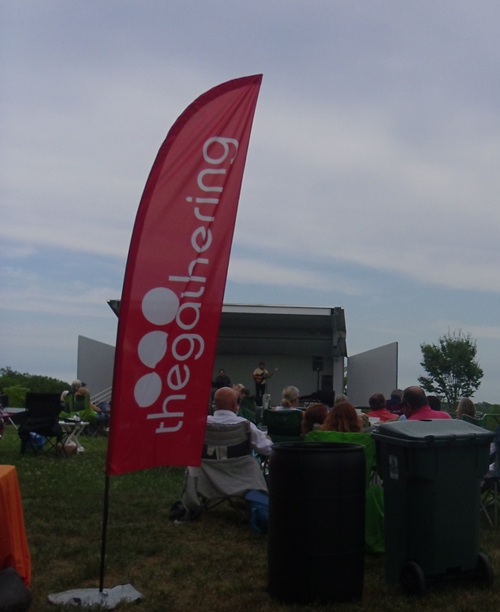
Flagpoles
Your ordinance needs to specify where flagpoles may be placed, and in consultation with your city attorney, you may want to say something about what types of flags are permitted. Are they allowed to display only national and state or provincial flags, or is the logo flag of the business or institution allowed? Or are some other causes allowed to be celebrated? Tread carefully here, as elsewhere, to make sure you are not over-specifying the content of the sign, which has been the subject of a U.S. Supreme Court ruling. A size limitation on the flags themselves is appropriate and common.
Some cities do not address flags and flagpoles in their sign ordinance or the sign section of the zoning ordinance. If that's what you decide, that is OK too.
Below is a common dilemma. The flag on the right is a Christian flag. Your attorney might well say that if you allow that, you need to allow businesses to come up with their own flags to put up, and you need to allow rainbow or nazi flags too.
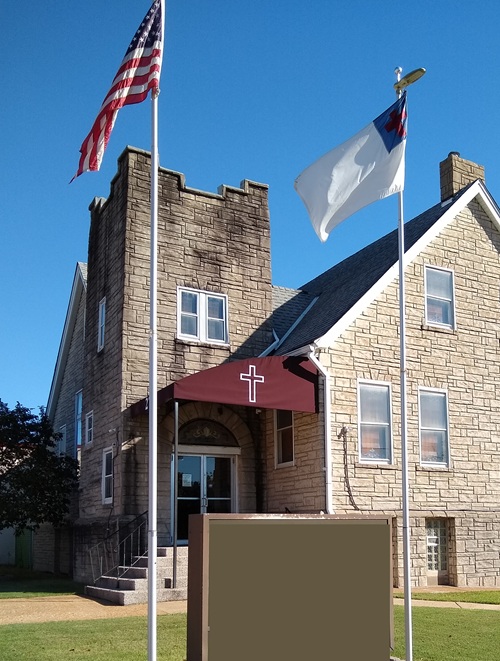
Drive-Through Restaurant Menus or Other Similar Business Signs
These signs may be regulated separately, partly to limit hours of operation or the sound level of operation during some or all hours, and partly to anticipate the changing nature of these signs, although the changes are not as frequent as those of an animated or flashing sign. There may be changes from the breakfast menu to lunch, for instance, but not changes every few seconds.
The sound amplification is the factor that I think merits your consideration as a separate sign type.

Obsolete Signs
Sometimes the disposition of obsolete signs for businesses no longer in place is handled in the sign ordinance, although some cities choose to regulate this separately. It is good practice to require the removal of such signs within 30 days of the termination of the business or the business vacating the building. Any longer interval probably will just result in the persons responsible getting out of town, metaphorically, and leaving you saddled with an obsolete sign. Depending on the complexity of the sign, removal may be a hassle and an expense, so without a regulatory requirement, there is little incentive to comply.

Marquee Signs
As far as I am concerned, this term has so many different meanings in use that it is not a helpful category to use in your ordinances. (See reader boards for many instances of what people also may call marquee signs.) If you define it narrowly, such as signs announcing shows at movie or live theaters, or sporting event venues, you may find it helpful, since these signs often are large. By describing a minimum size area in the definitions, you can avoid confusion that people acquainted with other usages of the term may feel.
Here's a true marquee sign. (It's a reader board!)
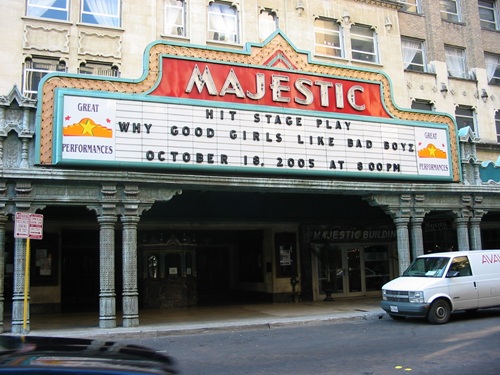
Banners
What might be described as a banner, such as a “coming soon” fabric banner draped across the front of a building or a sign announcing an exhibition, is probably best dealt with as a temporary sign, since those are appropriate in many circumstances, provided they are not kept in place well beyond their applicability. Each example below presents some potential regulatory issues or questions, which I leave to you to discuss locally.
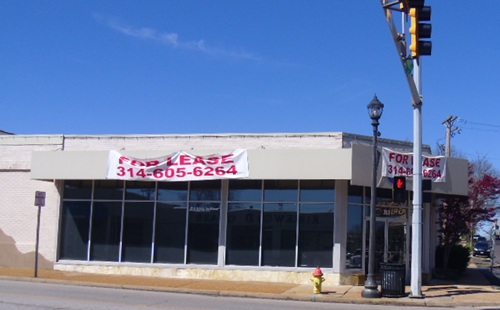
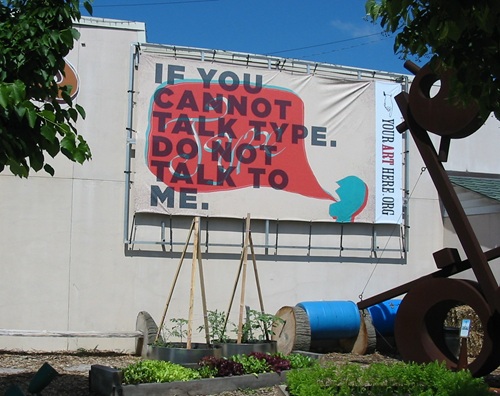

These types of signs need to be distinguished from street banners that are semi-permanently installed high on poles in a business district or neighborhood calling attention to itself or honoring someone or something. Some of you are much more familiar with this use of the term "banner." Usually a trend toward installing banners starts in a wholesome fashion, promoting municipal bicentennials, business districts, arts districts, and the likes. I certainly support that, but consider what grounds you will have for denial when a local business wants to promote itself all along a street. That may be fine too, but it's best to discuss such scenarios in advance.
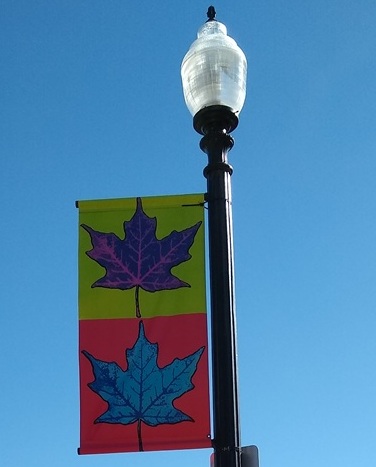
Particular Sign Issues to Address
Multiple Signs
Be sure you do not leave a loophole for situations in which a business has multiple signs, adding up to too many signs considering the size and importance of the business. Consider possibilities such as the next two.
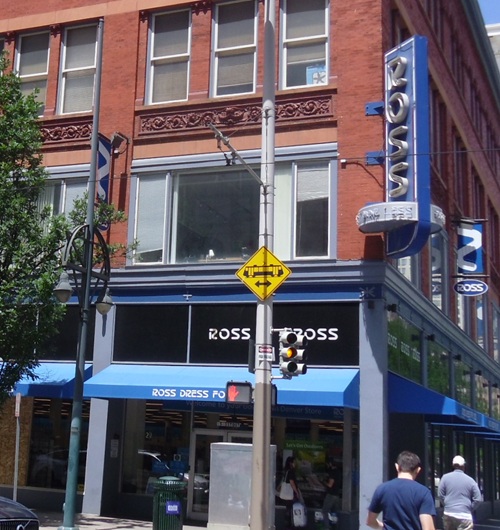
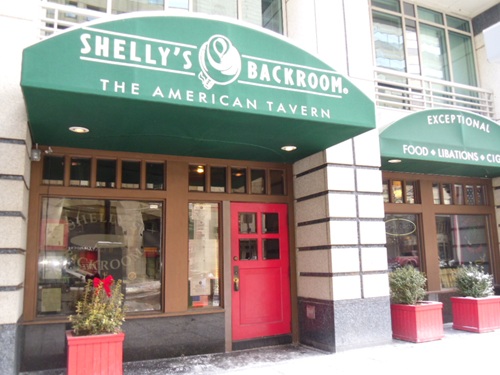
Clever Signs with Unusual Shapes
Especially for business areas where unusual and artistic signs will be appreciated and harmonious with the district’s brand, you might want to encourage odd sign shapes and designs. These examples make calculating the square footage of the sign extremely challenging, so work with your building official before you propose allowing such a thing. However, given the right circumstances, these unique signs can really add to the ambiance while accomplishing the utilitarian goal of informing customers of where they are located.
Personally I would not want to discourage such signs, but consider where you would draw the line, if at all, and how your administrators are supposed to calculate sign sizes.
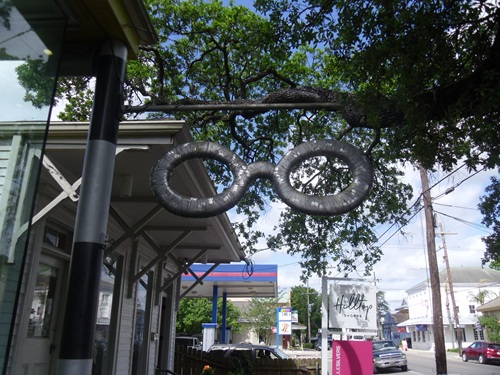

Legacy Signs
These signs may go by many names. It means a sign painted on or sculpted into a building for a business that no longer exists in that space. Sometimes these are called ghost signs, or a variety of other names.
Your sign ordinance probably will not deal with these unless you feel that your grandfathering clause will not cover the requirement that ads for obsolete businesses be removed.
Again, in the right circumstances, these signs can even add to the feel of an historic district and if anything, new owners of commercial properties and business owners should be prohibited from covering them up. Notice the faded sign for a manufacturing business below.
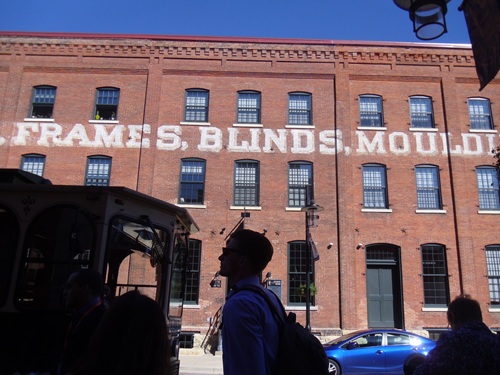
In this long article we have not dealt with any of the appropriate regulations that you may want to apply to the various types of signs. Nor have we done so on any other page of this website, at least up until this point. However, we did write a general article about why sign regulations are important and appropriate, and you should refer to that article liberally when you encounter people who want little or no regulation of signs.
Other Articles of Interest
- Community Development >
- Zoning and Codes > Outdoor Sign Types for Planning Commissioners
Join GOOD COMMUNITY PLUS, which provides you monthly with short features or tips about timely topics for neighborhoods, towns and cities, community organizations, and rural or small town environments. Unsubscribe any time. Give it a try.


